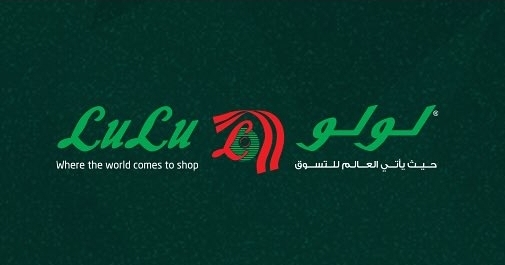Bridging Borders: How UPI’s Launch in Lulu Hypermarket, Qatar Elevates Customer and Employee Experience
Imagine arriving in Doha, eager to explore the spice-scented souks and modern malls. You pick up a packet of dates, and at checkout, you tap your phone. No currency exchange, no hidden fees. That simple act transforms your journey. This scenario is now real. India’s Unified Payments Interface (UPI) just went live in Qatar. Commerce Minister Piyush Goyal inaugurated the service at Lulu Hypermarket in Doha. Qatar National Bank’s POS terminals now accept UPI, empowering Indian travellers to pay seamlessly.
This shift matters. It reshapes how customers interact with merchants abroad. It also rewrites back-office processes for banks and retailers. In this article, we examine the ripple effects on customer experience (CX) and employee experience (EX). We unpack implementation challenges, best practices and actionable steps for CX and EX leaders.
From Friction to Flow: The Customer Perspective
Indian travellers spent over $30 billion in the Gulf last year. They value convenience, clarity and control. Yet currency exchange lines still frustrate many. Hidden processing fees tarnish trust. Legacy payments systems often burden shops with high card-network charges.
Now UPI enters the picture. It offers:
- Zero merchant fees for international transactions
- Instant settlement in local currency
- Real-time payment confirmation on both sides
During the Lulu Hypermarket launch, over 500 transactions processed in the first hour. Shoppers praised the simplicity. One customer said, “I tapped my phone and moved on. No waiting, no confusion.”
Winning at Multi-Channel Engagement
Retailers thrive when they blend physical and digital channels. UPI extends loyalty apps and offers. Imagine a grocery chain triggering personalized coupons when a UPI payment clears. Or restaurants sending digital receipts with suggested pairings. These omnichannel ties deepen engagement and boost basket size.
Behind the Scenes: Transforming Employee Experience
Rolling out UPI abroad isn’t plug-and-play. It demands alignment across technology, operations and people. Qatar National Bank teams needed training on the National Payments Corporation of India’s standards. They updated POS firmware and integrated APIs for currency conversion.
Training and Empowerment
Banks and retailers held immersive workshops. Staff learned how to:
- Troubleshoot UPI transaction failures
- Educate customers on scanning QR codes
- Handle refund requests across borders
Empowered employees feel confident at the counter. That confidence radiates into friendly, knowledgeable service. In one training session, a cashier in Doha noted, “I now explain UPI benefits in three languages.” That empathy turns new users into enthusiastic advocates.
Streamlining Operations at Lulu Hypermarket
Integrating UPI into existing workflows reduced reconciliation times by 40 percent. Under the old model, cross-border card settlements required batch processing overnight. Now UPI clears instantly, slashing exceptions and manual interventions. Operational teams can redeploy to strategic CX initiatives instead of chasing mismatched ledgers.
Case Study: Lulu Hypermarket CX Transformation
Lulu Hypermarket’s Qatar rollout illustrates best practices:
- Pilot Phase: They began with a soft launch in two outlets. Staff collected feedback and refined scripts.
- Customer Communication: Signage in English, Hindi and Arabic explained UPI benefits. SMS alerts reminded existing Indian customers to update their apps for Qatar access.
- Tech Resilience: They set up redundant internet links to avoid downtime. UPI’s inherently lightweight architecture mitigated latency issues during peak hours.
Within one month, UPI accounted for 15 percent of all foreign payment transactions at Lulu. Customer satisfaction scores jumped from 78 percent to 89 percent in Qatar outlets. Employee net promoter scores also rose, reflecting pride in offering a cutting-edge service.
Expert Insights: What CX Leaders Should Know
Digital payments guru Dr. Anjali Rao highlights three lessons:
- Localization is Key. Adapt user journeys to local contexts. In Qatar, offering Arabic-language prompts proved essential.
- Data Drives Personalization. Leverage transaction data to tailor offers in real time. That strengthens loyalty and maximizes revenue.
- Security Builds Trust. Consumers care about fraud protection. UPI’s two-factor authentication and dynamic QR codes safeguard payments and reassure users.
Meanwhile, CX strategist Marcus Lee notes that cross-border finance initiatives create brand differentiation. “When your store becomes part of a traveller’s seamless experience,” he says, “you earn loyalty beyond a single purchase.”
Navigating Challenges and Risks
No rollout is risk-free. Leaders must anticipate:
- Compliance Complexities. Ensuring adherence to Qatar Central Bank regulations and Indian data-privacy laws.
- Exchange-Rate Volatility. Building hedging mechanisms to protect merchants from sudden currency swings.
- Technical Integration. Harmonizing UPI’s API with legacy POS systems demands robust middleware.
Mitigation tactics include forming trilateral working groups between banks, regulators and merchants. Regular compliance audits and scenario-based drills can expose hidden gaps before they impact customers.
The Broader Impact: Deepening India-Qatar Ties
Beyond retail, UPI in Qatar fosters deeper economic integration. Small-business owners in Doha can tap Indian payment rails to settle supplier invoices back home. That reduces remittance costs and drives bilateral trade growth. Tourism boards can co-market destinations with seamless checkout experiences for Indian visitors.
EX professionals can expect new roles in payments operations, fraud monitoring and data analytics as UPI expands into sectors like hospitality and healthcare.
Actionable Recommendations for CX and EX Leaders
To capitalize on this opportunity, consider the following steps:
- Map Customer Journeys. Identify key touchpoints where friction exists. Introduce UPI at those moments.
- Co-Design Staff Training. Involve frontline employees in building training modules. Their insights improve realism and uptake.
- Leverage Analytics. Monitor transaction patterns daily. Use dashboards to detect anomalies and spot personalization opportunities.
- Engage Regulators Early. Proactive dialogue with central banks accelerates approvals and avoids surprises.
- Pilot, Iterate, Scale. Start small, gather feedback, refine processes and then expand across outlets or regions.
Future Outlook: Beyond Qatar
The Qatar launch marks only the beginning. UPI could soon power payments in the UAE, Europe and North America. Each market will bring unique cultural and regulatory nuances. CX leaders who master cross-border digital payments today will set the stage for a truly global retail experience.

Key Takeaways
For CX and EX professionals, UPI’s launch in Qatar offers a blueprint:
- Enhance Customer Delight with instant, fee-free payments.
- Strengthen Employee Confidence via targeted training and clear processes.
- Optimize Operations through real-time reconciliation.
- Foster Cross-Border Growth by aligning with regulatory frameworks.
By embracing these principles, organizations can transform payments from a hurdle into a strategic differentiator. The future of retail lies in frictionless journeys that span continents. UPI in Qatar proves the path ahead is not only possible—it starts with a single tap.

